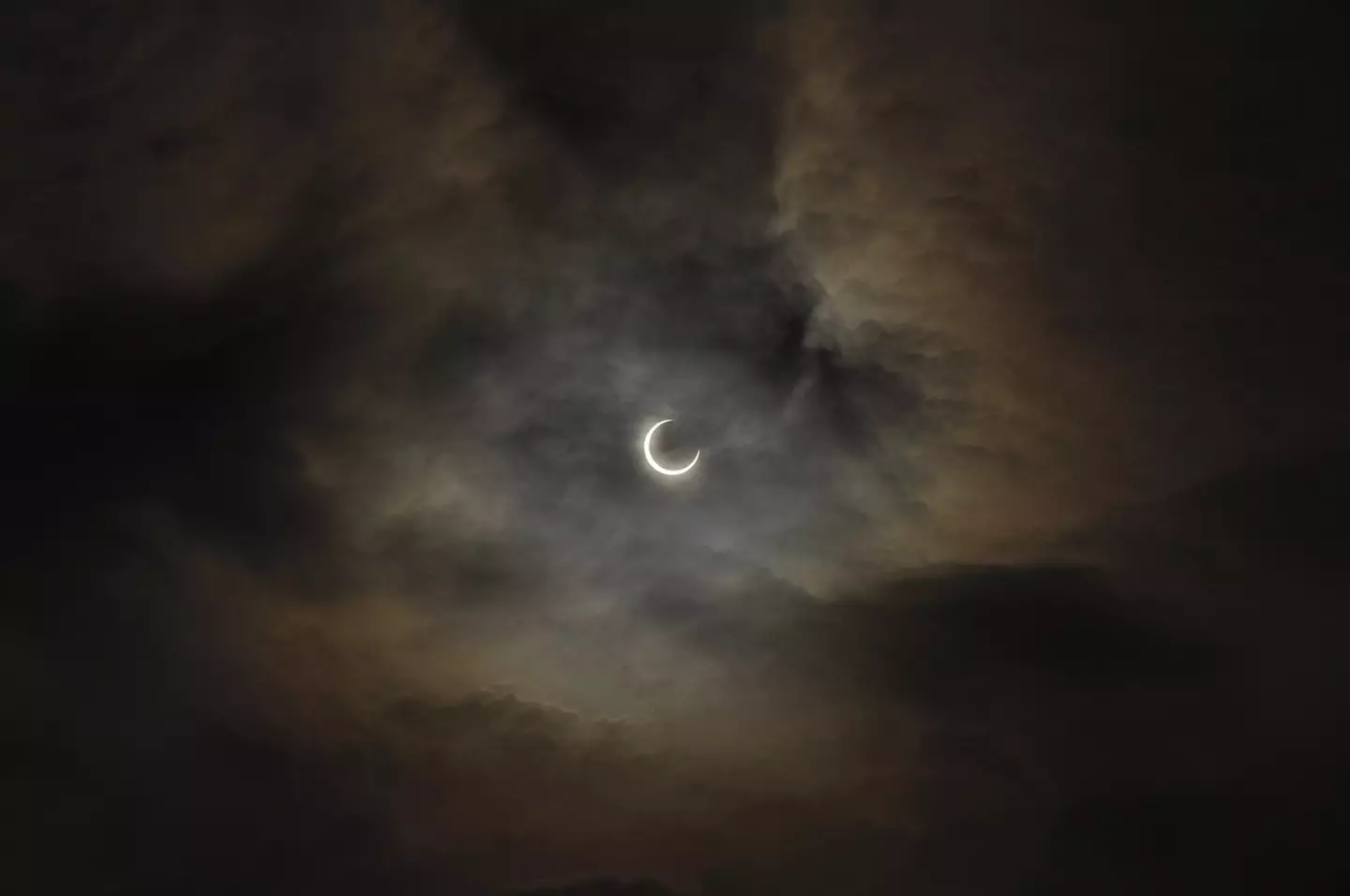Sky gazers are in for a treat as a rare 'hybrid Solar Eclipse' is set to take place later this week.
A hybrid Solar Eclipse is one that changes its appearance as the moon's shadow moves across the surface of Earth.
In some parts of the world, people will see the sun being mostly or completely covered by the moon, resulting in a darker daytime.

Advert
The Royal Observatory says this phenomenon will be visible to those living in the southern hemisphere, including Western Australia and Southeast Asia, at around 11:30am local time on April 20.
Unfortunately, this means that eclipse enthusiasts (If that's a thing) will have to miss out in the UK and US.
And in another bit of bad news for sky watchers, there isn't set to be another hybrid solar eclipse until November 2031.
The last one took place in November 2013.
Advert
There are different types of solar eclipses that can occur when the moon passes between the earth and the sun.
A total solar eclipse occurs when the sun is completely blocked out, whilst an annular eclipse is when the moon appears slightly smaller than the sun, leaving it surrounded by a bright ring of light.
A partial solar eclipse is...well when the sun is partially covered by the moon.
A hybrid solar eclipse is essentially a mix of a total eclipse and an annular eclipse, but it's preceded by a partial eclipse as the moon moves into position.
Advert
Got that?
Anyone else feel like they're back in GCSE science?
Dr Greg Brown, astronomer at the Royal Observatory Greenwich, told MailOnline: "This eclipse is only visible from Australia, East Timor, Indonesia, the southern Indian Ocean and western Pacific Ocean, while the connected partial eclipse will also be visible to a few surrounding regions."

Advert
For those who are fortunate enough to bear witness to the eclipse, it's important to remember the safety rules.
People should never look directly at the eclipse with the naked eye or if they're wearing sunglasses.
It's also not advisable to look through binoculars, telescope or a camera lens.
The best way to catch a glimpse is through a pinhole projector or solar eclipse viewing glasses.
Advert
Dr Robert Massey at the Royal Astronomical Society said: "The simplest way to watch an eclipse is to use a pinhole in a piece of card.
"An image of the sun can then be projected on to another piece of card behind it (experiment with the distance between the two, but it will need to be at least 30 cm).
"Under no circumstances should you look through the pinhole."
Dr Massey also recommended the 'mirror projection method' as a way to safely enjoy the eclipse.
Advert
Dr Massey said: "You need a small, flat mirror and a means of placing it in the sun so that it reflects the sunlight into a room where you can view it on a wall or some sort of a flat screen,' he said.
"You may also have eclipse glasses with a certified safety mark, and these are available from specialist astronomy suppliers."
For people living in the UK, we'll have to wait another 67 years to see a total solar eclipse.
It'll occur on September 23 2090.
Advert
The day after my 92nd birthday...only a short while away...

